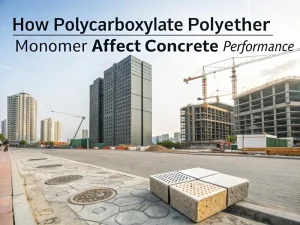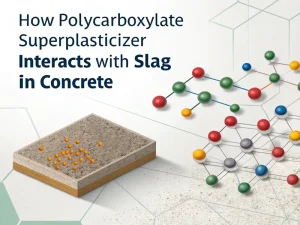Blog
Polycarboxylate Superplasticizer Price: A Multifaceted Analysis

Polycarboxylate superplasticizer is commonly used as a concrete admixture. As with any basic building material, understanding the factors that affect its price is crucial for construction companies, contractors, and material suppliers. Is his price subject to change, and what factors affect the price changes?
This article delves into various aspects that determine the price of polycarboxylate superplasticizers.
Table of Contents
Factors affect polycarboxylate superplasticizer price
1. The complexity of manufacturing processes
1.1 Advanced Aggregation Technology
The production of polycarboxylate superplasticizers involves complex polymerization processes. Polycarboxylate polymers are synthesized through copolymerizing monomers such as acrylic acid, methacrylic acid, and polyethylene glycol (PEG) derivatives. These reactions require precise control of temperature, pressure, and reaction time.
For example, free radical polymerization methods require strict monitoring to ensure that the polymer achieves the desired molecular weight and structure. Specialized equipment and skilled operators are needed to manage these processes, which increases overall production costs and subsequently affects market prices.
1.2 Quality control during the PCE synthesis process
The prices of monomers such as acrylic and methacrylic acid used to produce polycarboxylate superplasticizers fluctuate considerably. These monomers originate from petrochemicals, and their prices are influenced by factors such as crude oil prices, global supply and demand dynamics, and geopolitical events.
For example, a sudden increase in crude oil prices may lead to an increase in the production cost of acrylic acid, as the petrochemical industry uses oil-based raw materials. Therefore, as the cost of monomers increases, the price of polycarboxylate superplasticizers also tends to rise.
2. Fluctuations in raw material costs
The prices of monomers such as acrylic and methacrylic acid used to produce polycarboxylate superplasticizers fluctuate considerably. These monomers originate from petrochemicals, and their prices are influenced by factors such as crude oil prices, global supply and demand dynamics, and geopolitical events.
For example, a sudden increase in crude oil prices may lead to an increase in the production cost of acrylic acid, as the petrochemical industry uses oil-based raw materials. Therefore, as the cost of monomers increases, the price of polycarboxylate superplasticizers also tends to rise.
3. polycarboxylate superplasticizer Market demand and competition
3.1 PCE Construction industry demand
The construction of high-rise buildings, large bridges, and other infrastructure projects is rising globally. These projects require high-performance concrete, and polycarboxylate superplasticizer is crucial for achieving the required strength, workability, and durability.
New skyscrapers continue to emerge in big cities such as Dubai or Shanghai, and there is a high demand for polycarboxylate superplasticizers. With the increasing demand for high-performance concrete, the demand for polycarboxylate superplasticizers is also growing, which may push up prices, especially when supply is limited.
At the same time, the prefabricated concrete industry has been expanding due to the demand for faster construction time and better quality control in current construction.Polycarboxylate superplasticizer is widely used in precast concrete production to achieve early strength development and consistent product quality.
With the establishment of more precast concrete factories and increased production of existing factories, the demand for polycarboxylate superplasticizers has surged. The growth of this demand will affect prices, especially in regions where the precast concrete industry is thriving, such as parts of Europe and North America.
3.2 Competition among Manufacturers
The number of manufacturers producing polycarboxylate superplasticizers will significantly impact prices. The construction industry is vast in regions with competing manufacturers, such as China, and many chemical companies produce superplasticizers. Competition can lower prices.
Manufacturers strive to offer competitive prices to gain market share, which may lead to price wars. On the other hand, in some smaller markets or areas with limited production capacity, a lack of competition may lead to price increases.
Conclusion
The price of polycarboxylate superplasticizer is complex and influenced by various factors, from manufacturing processes and raw material costs to market demand and competition. Stakeholders in the construction industry need to carefully consider these factors when developing budgets for projects that require polycarboxylate superplasticizers.
With the construction industry’s continuous development, people are paying increasing attention to high-performance and sustainable buildings, and the price of polycarboxylate superplasticizers may still be a dynamic aspect of the building materials market.
Get In Touch
To obtain the latest quotation for polycarboxylate superplasticizer, please get in touch with us!
Related Blogs

How Polycarboxylate Polyether Monomer Affect Concrete Performance
Blog How Polycarboxylate

How Polycarboxylate Superplasticizer Interacts With Slag In Concrete
Blog How Polycarboxylate

